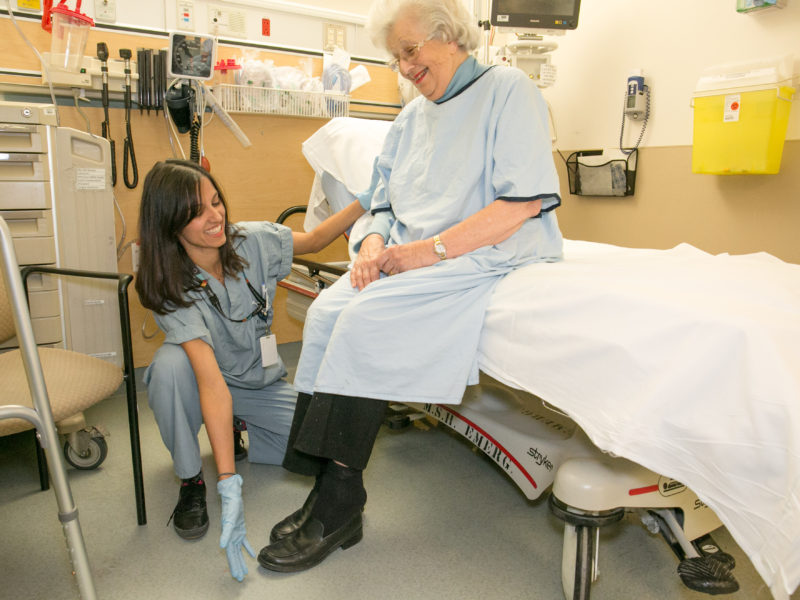Assistive Technology In Occupational Therapy: Tools For Empowerment
In the dynamic landscape of healthcare, the intersection of assistive technology and occupational therapy emerges as a powerful catalyst for empowerment. This article delves into the symbiotic relationship between occupational therapy and assistive technology, exploring the diverse tools that enhance independence, improve daily functioning, and open new avenues of engagement for individuals facing unique challenges.
Understanding Assistive Technology in Occupational Therapy:
Assistive technology (AT) refers to devices, tools, or systems designed to support individuals in performing tasks that may be challenging due to physical, cognitive, or sensory limitations. When integrated into occupational therapy, assistive technology becomes a cornerstone in the quest to maximize independence and enhance the quality of life for diverse populations.
Categories of Assistive Technology in Occupational Therapy:
- Mobility Aids:
- Wheelchairs, walkers, and canes empower individuals with mobility impairments to navigate their environments confidently. Powered mobility devices, including scooters and electric wheelchairs, further expand options for independent movement.
- Adaptive Tools for Daily Living:
- Reacher grabbers, adaptive utensils, and dressing aids are examples of tools designed to facilitate daily activities for individuals with limited reach, dexterity, or strength. These adaptations promote autonomy in self-care tasks.
- Communication Devices:
- For individuals with speech or communication challenges, augmentative and alternative communication (AAC) devices serve as invaluable tools. These devices range from simple picture boards to sophisticated electronic communication aids.
- Computer Access and Ergonomic Tools:
- Specialized keyboards, voice recognition software, and ergonomic furniture contribute to creating accessible work environments. These adaptations enable individuals with physical or cognitive challenges to engage in computer-based tasks with greater ease.
- Sensory Aids:
- Individuals with sensory processing disorders or impairments benefit from sensory aids such as weighted blankets, noise-canceling headphones, or tactile stimulation tools. These aids promote comfort and engagement in various environments.
- Environmental Control Systems:
- Smart home technology allows individuals with mobility limitations to control home devices, such as lights, thermostats, and security systems, through voice commands or mobile applications, fostering an environment tailored to their needs.
Empowering Lives Through Assistive Technology:
- Enhanced Independence:
- Assistive technology provides individuals with the tools to overcome barriers, fostering a sense of independence in daily living. This empowerment extends to activities such as dressing, cooking, and mobility, where individuals can actively participate in their routines.
- Improved Social Inclusion:
- Communication devices and adaptive tools enable individuals with communication or motor challenges to engage more effectively in social interactions. This enhanced communication fosters connections, reducing isolation and promoting a sense of belonging.
- Access to Education and Employment:
- Adaptive technologies in education, such as screen readers or speech-to-text software, level the playing field for individuals with learning disabilities. Similarly, workplace accommodations, including ergonomic tools and assistive technology, facilitate meaningful participation in employment.
- Personalized Rehabilitation:
- Assistive technology is seamlessly integrated into occupational therapy plans, offering personalized solutions for rehabilitation. Whether recovering from an injury or adapting to a chronic condition, individuals can regain and enhance their functional abilities with the support of these tools.
- Promoting Autonomy in Aging:
- As individuals age, assistive technology becomes a vital ally in maintaining autonomy. Devices such as smart home systems, medication reminders, and fall detection tools contribute to a safe and supportive aging experience
Conclusion:
Assistive technology serves as a bridge, connecting individuals with diverse abilities to a world of possibilities. In the realm of occupational therapy, these tools become instruments of empowerment, fostering independence, social inclusion, and a renewed sense of purpose. As technology continues to evolve, the collaboration between assistive technology and occupational therapy holds the promise of breaking down barriers, unlocking potential, and creating a more inclusive and accessible world for everyone.








